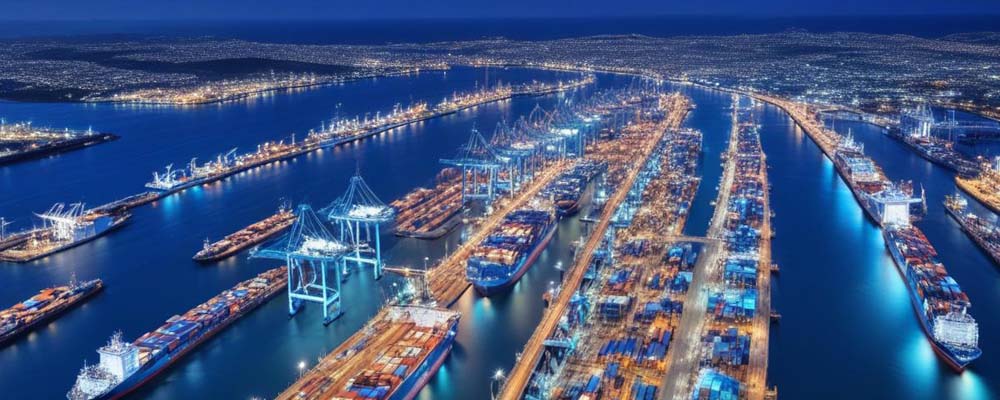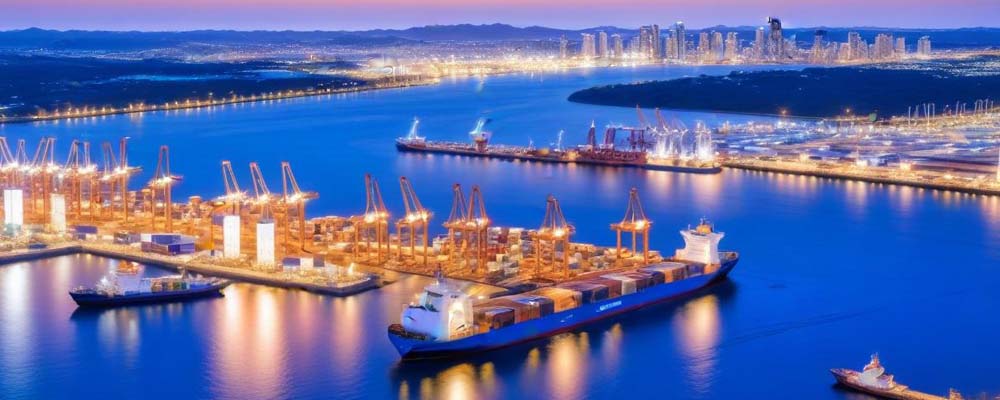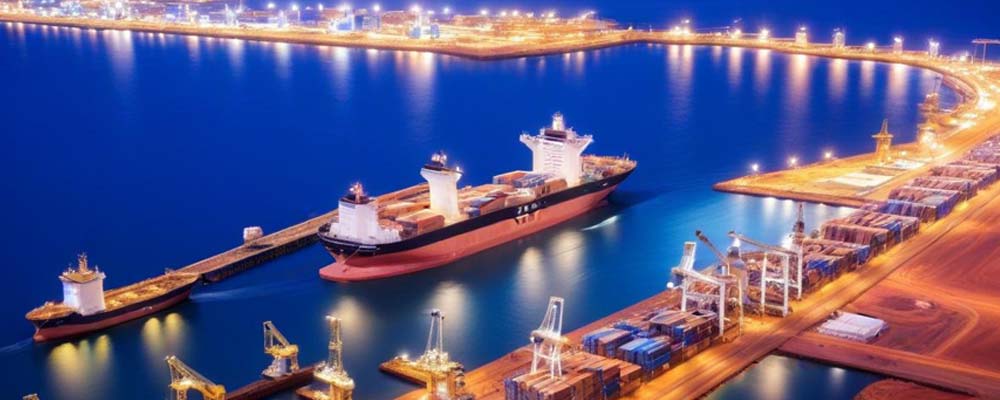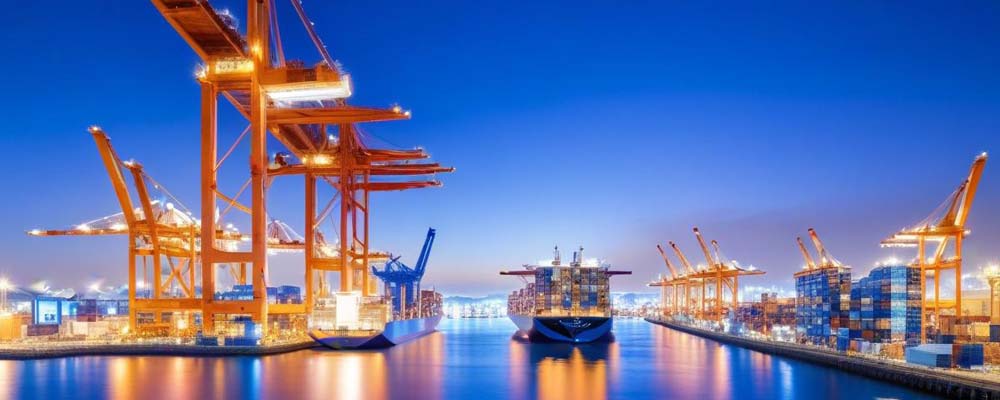
Australia’s vast coastline is home to some of the world’s most important ports, serving as vital gateways for international trade. For freight forwarding companies, logistics providers, importers, exporters, customs brokers, manufacturers, and e-commerce businesses, understanding these ports is crucial for efficient operations. This comprehensive guide will explore the top five major ports in Australia, providing valuable insights into their significance, facilities, and unique attributes.
The Top 5 Major Ports in Australia
Australia’s geography and economy are heavily influenced by its ports. With over 95% of the country’s trade volume being seaborne, these ports play a critical role in the global supply chain. This guide will focus on the top five ports that stand out due to their cargo volumes, strategic locations, and advanced facilities.
1. Port of Melbourne
Strategic Importance
The Port of Melbourne stands as the largest container and general cargo port in Australia. Situated at the mouth of the Yarra River, it serves as a critical hub for both domestic and international trade. Its strategic location makes it a vital link between Australia and major global markets, particularly in Asia and the Americas.
Facilities and Infrastructure
The port boasts state-of-the-art facilities, including extensive container terminals and bulk cargo handling areas. It is equipped with modern cranes, storage facilities, and advanced logistics infrastructure, ensuring efficient cargo handling and swift turnaround times.
Economic Impact
Handling over 3 million TEUs (twenty-foot equivalent units) annually, the Port of Melbourne significantly contributes to the Australian economy. It supports thousands of jobs and facilitates the import and export of a wide range of goods, from electronics to agricultural products.
2. Port Botany (Sydney)
Strategic Importance
Located in Sydney, Port Botany is another key player in Australia’s maritime trade. It primarily handles containerized cargo and is a major gateway for imports and exports to and from the Asia-Pacific region. Its proximity to Sydney’s industrial zones and population centers enhances its strategic value.
Facilities and Infrastructure
Port Botany features advanced container terminals, automated systems, and extensive warehousing facilities. It is well-connected to major road and rail networks, providing seamless transportation links for cargo movement. The port’s modern infrastructure supports efficient operations and high throughput.
Economic Impact
With an annual throughput of over 2.5 million TEUs, Port Botany is a significant contributor to New South Wales’ economy. It supports a diverse range of industries, including manufacturing, retail, and agriculture, by facilitating the smooth flow of goods and materials.
3. Port of Brisbane
Strategic Importance
The Port of Brisbane is Queensland’s largest multi-cargo port, serving as a key logistics hub for the state. Its strategic location along the Brisbane River provides access to both domestic and international markets. The port is crucial for the export of Queensland’s agricultural and mineral resources.
Facilities and Infrastructure
Equipped with modern container terminals, bulk handling facilities, and extensive storage areas, the Port of Brisbane ensures efficient cargo handling. It also features advanced logistics and intermodal facilities, enhancing its connectivity to regional and national supply chains.
Economic Impact
Handling over 1.35 million TEUs annually, the Port of Brisbane plays a vital role in Queensland’s economy. It supports thousands of jobs and facilitates the export of key commodities such as coal, beef, and grain, contributing significantly to the state’s GDP.
4. Port of Fremantle (Perth)
Strategic Importance
Situated in Western Australia, the Port of Fremantle is a major gateway for trade with Asia, Europe, and the Americas. It serves as a key hub for the import and export of a wide range of goods, including machinery, vehicles, and agricultural products. Its strategic location enhances its importance in global trade routes.
Facilities and Infrastructure
The Port of Fremantle features modern container terminals, bulk handling facilities, and extensive warehousing options. It is equipped with advanced logistics infrastructure, including rail and road connections, ensuring efficient cargo handling and transportation.
Economic Impact
With an annual throughput of over 750,000 TEUs, the Port of Fremantle significantly contributes to Western Australia’s economy. It supports various industries, including mining, agriculture, and manufacturing, by facilitating the smooth flow of goods and materials.
5. Port Hedland
Strategic Importance
Port Hedland, located in Western Australia, is the world’s largest bulk export port. It is primarily known for its role in the export of iron ore, which is a critical component of the global steel industry. The port’s strategic location and capacity make it essential for Australia’s mining sector.
Facilities and Infrastructure
Port Hedland features extensive bulk handling facilities, deep-water berths, and advanced loading systems. It is equipped with state-of-the-art infrastructure to handle massive volumes of iron ore and other bulk commodities. The port’s logistics capabilities ensure efficient loading and transportation.
Economic Impact
Handling over 500 million tonnes of cargo annually, Port Hedland is a significant contributor to Australia’s economy. It supports the mining industry and facilitates the export of iron ore to major markets such as China and Japan, generating substantial revenue for the country.
Benefits of Understanding Major Ports
Improved Logistics Planning
For logistics providers and freight forwarding companies, understanding the capabilities and facilities of these major ports is crucial for efficient logistics planning. It allows for better route optimization, reduced transit times, and cost-effective operations.
Enhanced Trade Opportunities
Importers and exporters can leverage the strengths of these ports to enhance their trade opportunities. By choosing the right port for their cargo, they can benefit from faster clearance times, reduced handling costs, and improved market access.
Competitive Advantage
For customs brokers, manufacturers, and e-commerce businesses, knowledge of these ports provides a competitive advantage. It enables them to streamline their supply chains, reduce operational costs, and deliver products to customers more efficiently.
FAQs About Ports in Australia
Why are Australian ports so important for global trade?
Australian ports are vital for global trade due to their strategic locations and role as major gateways for the export of diverse commodities, including minerals, agricultural products, and manufactured goods. They enhance international trade by providing efficient logistics and transportation services that ensure timely delivery of goods to markets worldwide. Additionally, Australia’s proximity to key trade routes with Asia, Europe, and the Americas amplifies the significance of its ports in the global supply chain.
How do Australian ports contribute to the economy?
Australian ports significantly contribute to the economy by facilitating the export and import of goods, which supports various industries such as mining, agriculture, and manufacturing. This activity generates substantial revenue and creates thousands of jobs, both directly within port operations and indirectly through related sectors. Furthermore, through efficient cargo handling and transportation, these ports enhance the competitiveness of Australian businesses in the global market, thereby boosting the national GDP.
What are the challenges facing Australian ports?
Australian ports face several challenges, including capacity constraints, environmental concerns, and regulatory compliance issues. Capacity constraints stem from increasing trade volumes, necessitating continuous infrastructure upgrades and expansions. Environmental concerns involve managing the ecological impacts of port operations, which include emissions, waste, and water pollution. Additionally, ports must navigate complex regulatory environments, both domestically and internationally, to ensure compliance and maintain operational efficiency. Addressing these challenges is essential for sustaining the ports’ crucial role in global trade.
Conclusion
Australia’s major ports are the lifeblood of its economy, facilitating the smooth flow of goods and materials across the globe. For logistics professionals, understanding the capabilities, facilities, and strategic importance of these ports is essential for efficient operations and enhanced trade opportunities. By leveraging the strengths of these ports, businesses can gain a competitive edge, streamline their supply chains, and deliver products to customers more efficiently.
To further explore how Connecta can help you optimize your logistics and trade operations, Contact Us today. Our team is dedicated to providing tailored solutions that meet your unique needs and drive your business forward.











